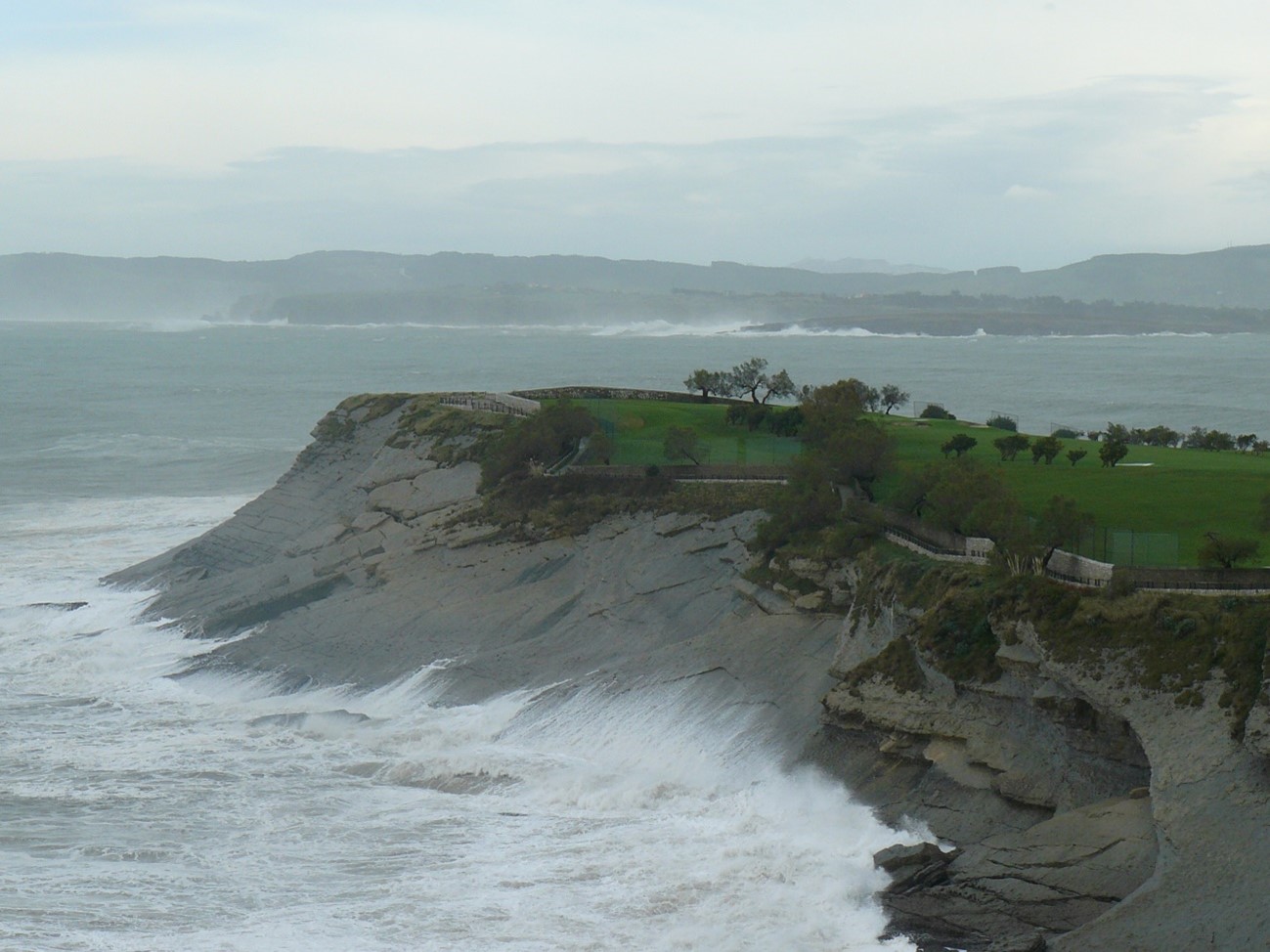IHCantabria develops a study to exploit the potential of data for shoreline modeling

Extreme event occurred in March 2014, off the coast of Santander. Source: IHCantabria
The application of their results allows improved quantification of coastal risk at various time scales, from short-term operational projections to digital twins, to contribute to coastal adaptation to climate change.
How many observations, with what frequency and accuracy are needed to obtain robust projections of the coastline position? What is the knowledge of the system required to correctly predict its performance? What is the best assimilation algorithm for a given application? are some of the questions answered in a recently published paper in the scientific journal Environmental Research Letters, entitled: “Which data assimilation method to use and when: unlocking the potential of observations in shoreline modelling”.
Predicting how beaches react to changes in waves, sea level and human actions is one of the main challenges that Coastal Engineering has faced and continues to face. “In a context dominated by the recent increase in available data, it is necessary to integrate them to ensure the robustness of predictions. Data assimilation makes it possible to combine observations with the physical equations describing the processes, so that they can better represent the real world observed,” he says. Alexandra Toimil.
The main objective of the study was to improve shoreline evolution projections by integrating available observations. For this purpose, IHCantabria analyzed the performance of different observation assimilation algorithms, taking into account several characteristics of the measurement campaign -such as precision, duration or frequency- and of the system, such as initial knowledge or stationary evolution, or not.
In terms of methodology, after implementing the different assimilation methods in the context of shoreline prediction, the analysis of the performance of the assimilation algorithms is performed using the twin experiments procedure. “This methodology consists of generating a synthetic simulation, with reference parameters without assimilating observations. The reference parameters are then altered and a simulation is carried out by assimilating observations obtained from the reference simulation. Comparing the simulation altered with assimilation with the reference simulation, the performance of the different algorithms and their sensitivity to different characteristics of the observations and the knowledge of the system are analyzed”. This is how Moisés Álvarez Cuesta explains it.
The fundamental application of the results of this study is the improvement in the quantification of coastal risk at multiple time scales, from short-term operational coastal hazard projection systems to digital twins for coastal adaptation at the scale of climate change, says Iñigo J. Losada. A relevant contribution to knowledge is the transposition, for the first time, of assimilation techniques used mainly in atmospheric prediction to the study of the position of the coastline. The study also systematically analyzes the main coastal processes that shape beaches and proposes a guide for the selection of the most appropriate assimilation algorithm based on the available observations and the characteristics of the system to be simulated.
The research team for this study was composed of Moisés Álvarez-Cuesta, Alexandra Toimil and Íñigo J. Losada, who plan to extend their analysis to other relevant coastal impacts and work on the construction of a digital twin for coastal adaptation. This research is part of the project entitled “Scientific-technical basis of a digital twin for coastal climate change risk analysis and adaptation” (GDICOAST), under the Marine Science Program (PCM, ThinkInAzul program, funded by the European Union NextGenerationEU/PRTR-C17.I1).
For more information on the study and the full content of the article published in the journal Environmental Research Letters, please visit the following link: https://iopscience.iop.org/article/10.1088/1748-9326/ad3143





